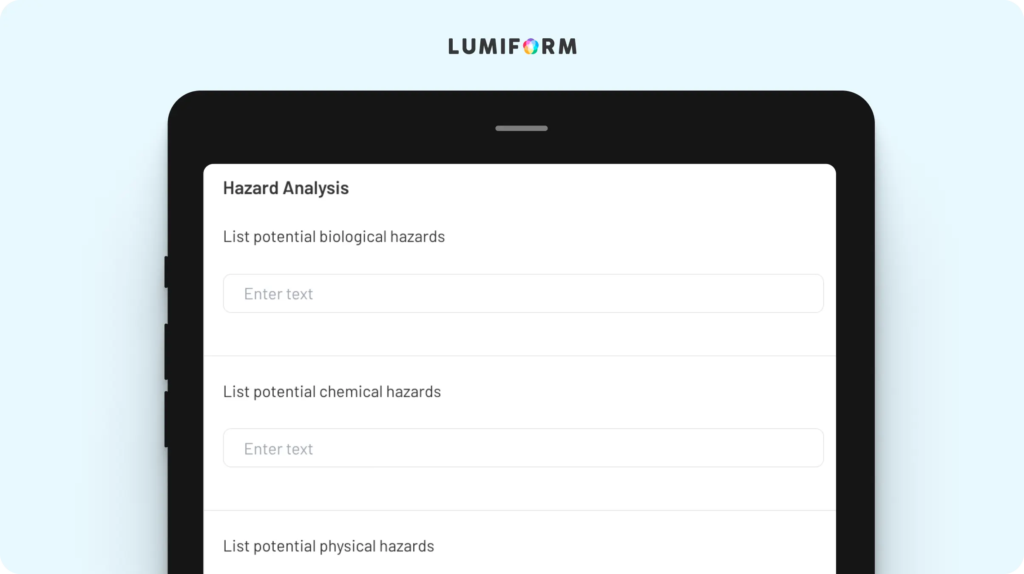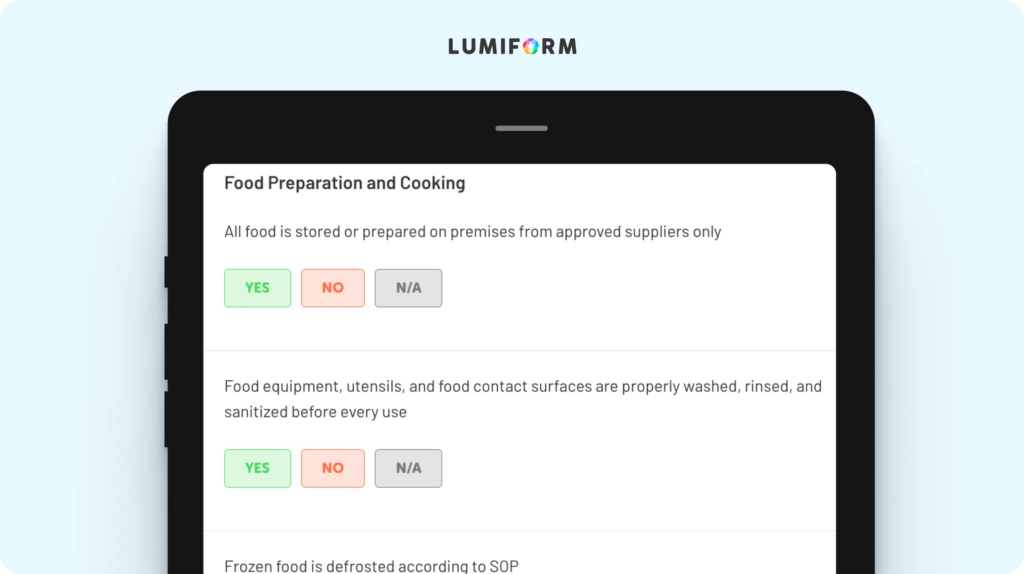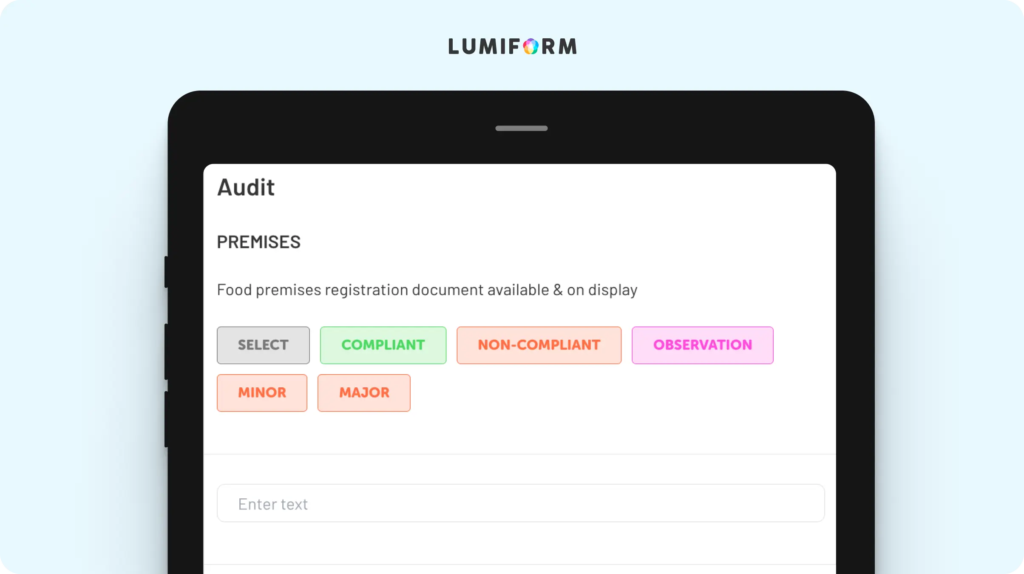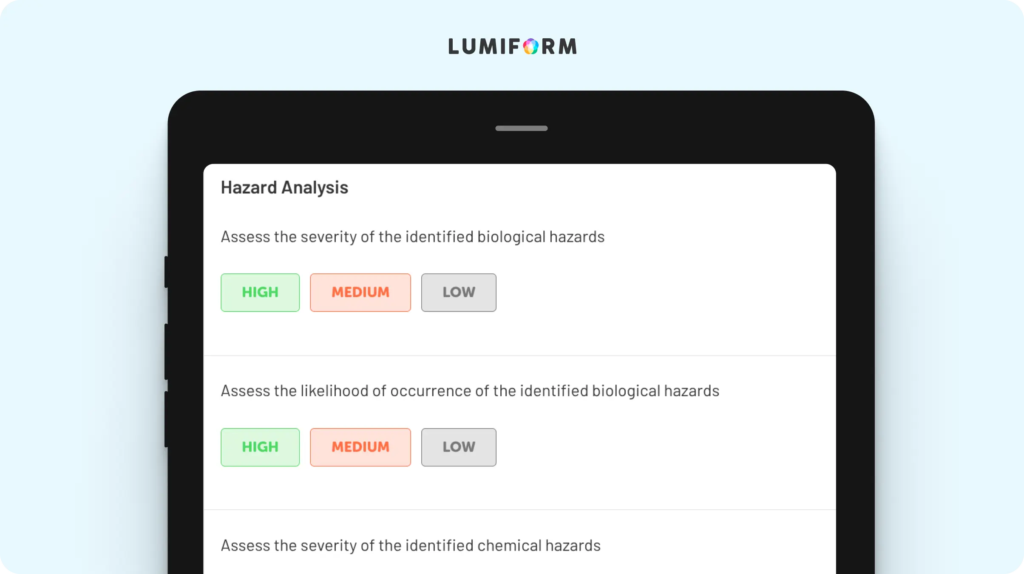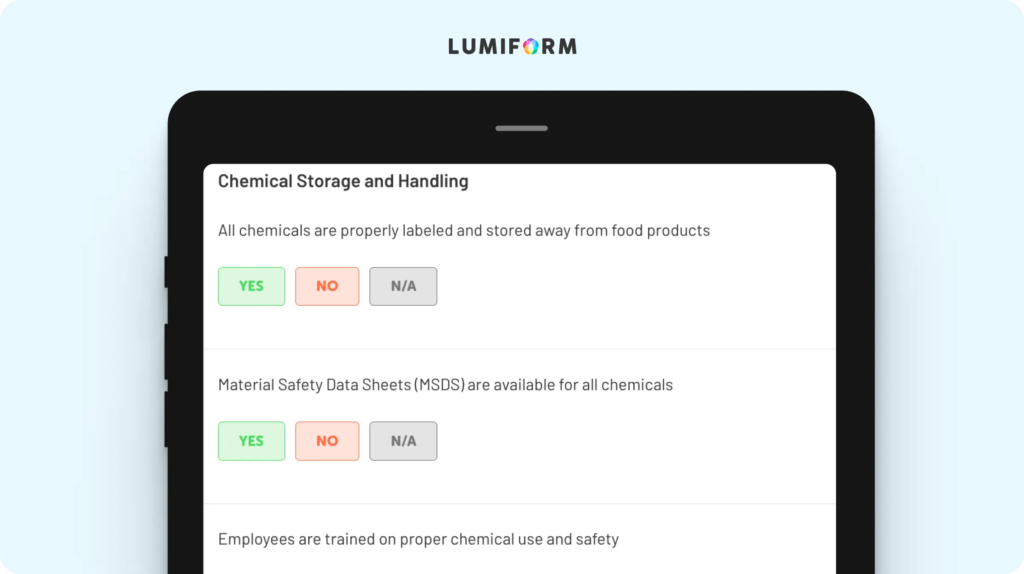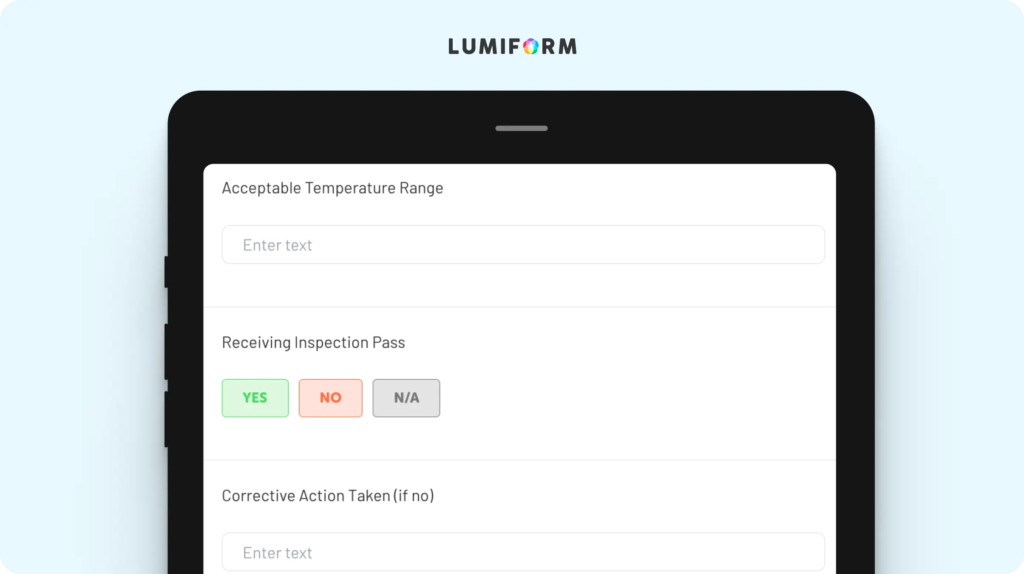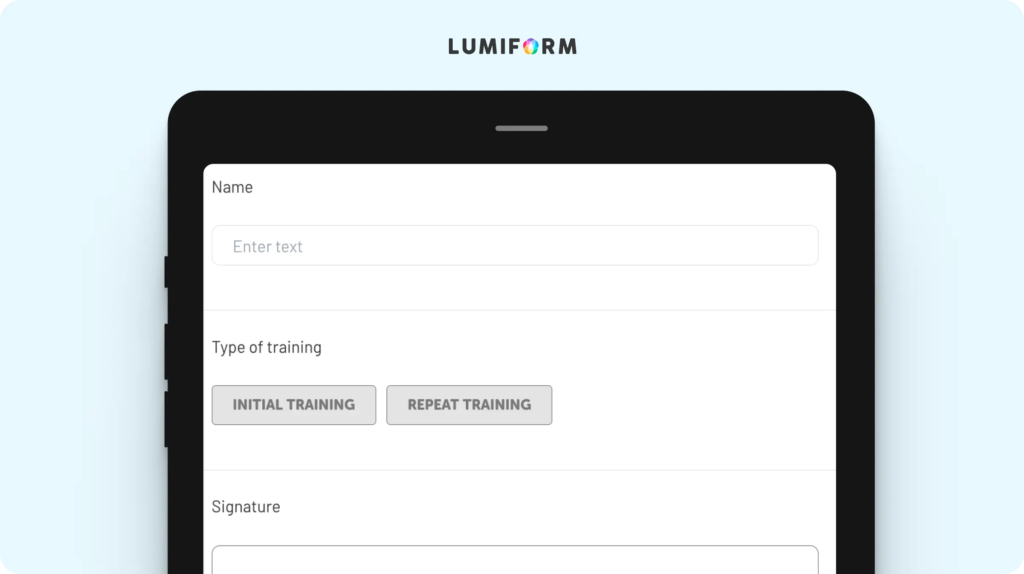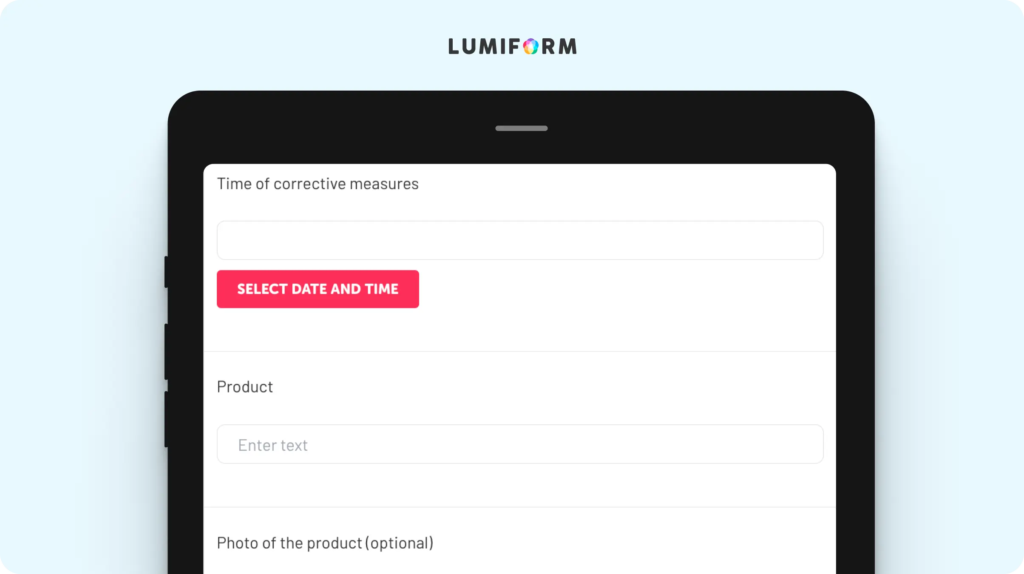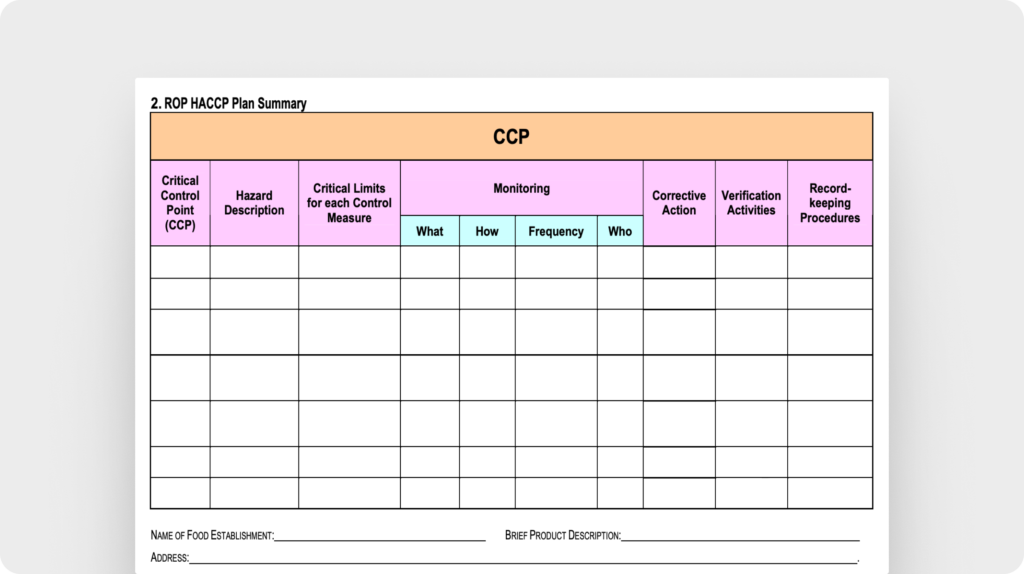Ensuring food safety is a requirement for any business in the food industry. Whether you’re managing a restaurant, overseeing food production, or handling distribution, having a reliable HACCP plan helps you stay on top of critical control points, streamline inspections, and minimize risks.
Instead of creating one from scratch, you can get to a fast start with a HACCP plan template. The customizable templates below give you a clear framework identifying hazards, tracking processes, and ensuring compliance at every stage. With consistent documentation, you’ll be better able to protect your customers and maintain the highest quality standards.
HACCP plan templates for safety and compliance
These templates not only save time but also allow your team to align better on procedures:
HACCP plan template
Creating a clear and effective food safety plan is essential to prevent hazards at any stage of production. This HACCP plan template helps you outline critical control points (CCPs), monitor processes, and document corrective actions. It simplifies your workflow, with tasks for identifying potential hazards, setting limits, and tracking ongoing compliance. You can easily tailor it to suit your operations by adding relevant CCPs or adjusting monitoring intervals. By organizing your plan in a structured format, you’ll save time while keeping thorough documentation.HACCP food safety plan template
Maintaining food safety requires a systematic approach, and this food safety plan template provides a practical solution for managing hazards and maintaining compliance. Use it to identify risks, implement preventive measures, and set clear monitoring guidelines. It offers a user-friendly structure to streamline your HACCP process, with customizable sections so you can add any of your own production steps. Whether you’re managing a small kitchen or overseeing a large food facility, you can improve consistency and accountability with this template.HACCP audit checklist
Audits can be a challenge without the right tools, but this HACCP audit checklist ensures you don’t overlook details during inspections. It covers essential aspects like CCP verification, equipment hygiene, and employee practices so you can monitor compliance and identify areas needing improvement. The flexible format allows you to add your own checkpoints, adjust scoring systems, or prioritize critical risks based on your specific requirements. Whether you’re conducting an internal audit or preparing for external reviews, this checklist keeps your inspections thorough, organized, and efficient.HACCP hazard analysis template
A successful HACCP system starts with a detailed hazard analysis. This template streamlines the process of identifying potential biological, chemical, and physical hazards at each stage of your workflow. It provides a clear structure for listing hazards, determining their severity and likelihood, and establishing control measures. You can customize it to fit specific products or production processes and add more detailed steps. By pinpointing vulnerabilities early, you’ll ensure stronger food safety practices and maintain compliance with confidence.HACCP sanitation checklist
Maintaining a clean environment is critical for food safety, and this sanitation checklist helps ensure hygiene standards are consistently met. From equipment cleaning schedules to surface sanitation checks, the template provides a comprehensive framework for managing routine cleaning tasks. You can modify sections to suit specific cleaning protocols or add verification steps to track completion. By using this checklist, you’ll streamline sanitation procedures, reduce contamination risks, and uphold high-quality standards in every corner of your operation.HACCP record-keeping form example
Accurate record-keeping is crucial for any HACCP system. This record-keeping form provides a structured layout to document critical control points (CCPs), monitoring results, and corrective actions. By capturing essential details in one place, it improves transparency and traceability for audits or reviews. You can customize the form by adding specific data fields based on your processes, such as equipment readings. With consistent use, this form simplifies documentation and improves compliance with food safety regulations.HACCP temperature monitoring form
Temperature control is one of the most critical factors in preventing foodborne hazards. This temperature monitoring form allows you to record, track, and verify temperature readings at every stage of food handling and storage. Its clear layout helps you log daily checks, note deviations, and document corrective actions when limits are exceeded. You can adjust the form to include specific temperature ranges for different foods, equipment details, or time intervals based on your operations.HACCP training checklist
A well-trained team is key to maintaining a successful HACCP program, and this training checklist aids you in tracking employee readiness and compliance. It outlines key training areas, from understanding hazards to implementing control measures and proper documentation procedures. You can tailor it to include industry-specific protocols, job roles, or assessment criteria to ensure training aligns with your operational goals. By systematically reviewing each training component, you can equip your team with the knowledge and skills to uphold food safety standards.Corrective actions template
Mistakes and deviations happen, but an effective corrective actions plan ensures they’re addressed quickly and thoroughly. This template provides a clear structure for documenting non-conformances, identifying root causes, and implementing solutions to prevent recurrence. With prompts for tracking issues, assigning responsibilities, and verifying corrective measures, it keeps your processes organized and accountable. You can customize the template to align with your workflows by adding fields for timestamps, signatures, or follow-up steps.HACCP form templates (PCCHD)
This set of blank HACCP templates from the Peoria City/County Health Department supports you in food safety compliance. It includes essential documentation tools like hazard analysis tables, CCP monitoring sheets, and temperature logs for cooking, cooling, holding, and receiving. With additional forms for corrective actions, equipment calibration, and sanitation tracking, plus a process flow chart, these forms work great for food businesses implementing or maintaining a HACCP plan.
How to create a HACCP plan template in Lumiform
Building an HACCP plan template tailored to your operation is simple and efficient with Lumiform. Leverage the drag-and-drop form builder, which lets you design a framework that captures every essential detail—no technical expertise required. Add multiple input types, such as text fields, checkboxes, and photo uploads, to document hazards visually and keep records comprehensive.
Once the template is live, the mobile app makes it easy for your team to use on-site—whether they’re monitoring temperatures in storage or inspecting cleanliness in the kitchen. If issues come up, your team can flag them directly in the form, and you can quickly assign tasks to resolve problems without delay.
After you’ve collected data, generate insightful reports to analyze trends and pinpoint areas needing improvement. This not only helps refine your HACCP processes but also ensures compliance is well-documented and auditable. By focusing on usability and results, you’ll create a powerful tool that supports food safety at every level.

